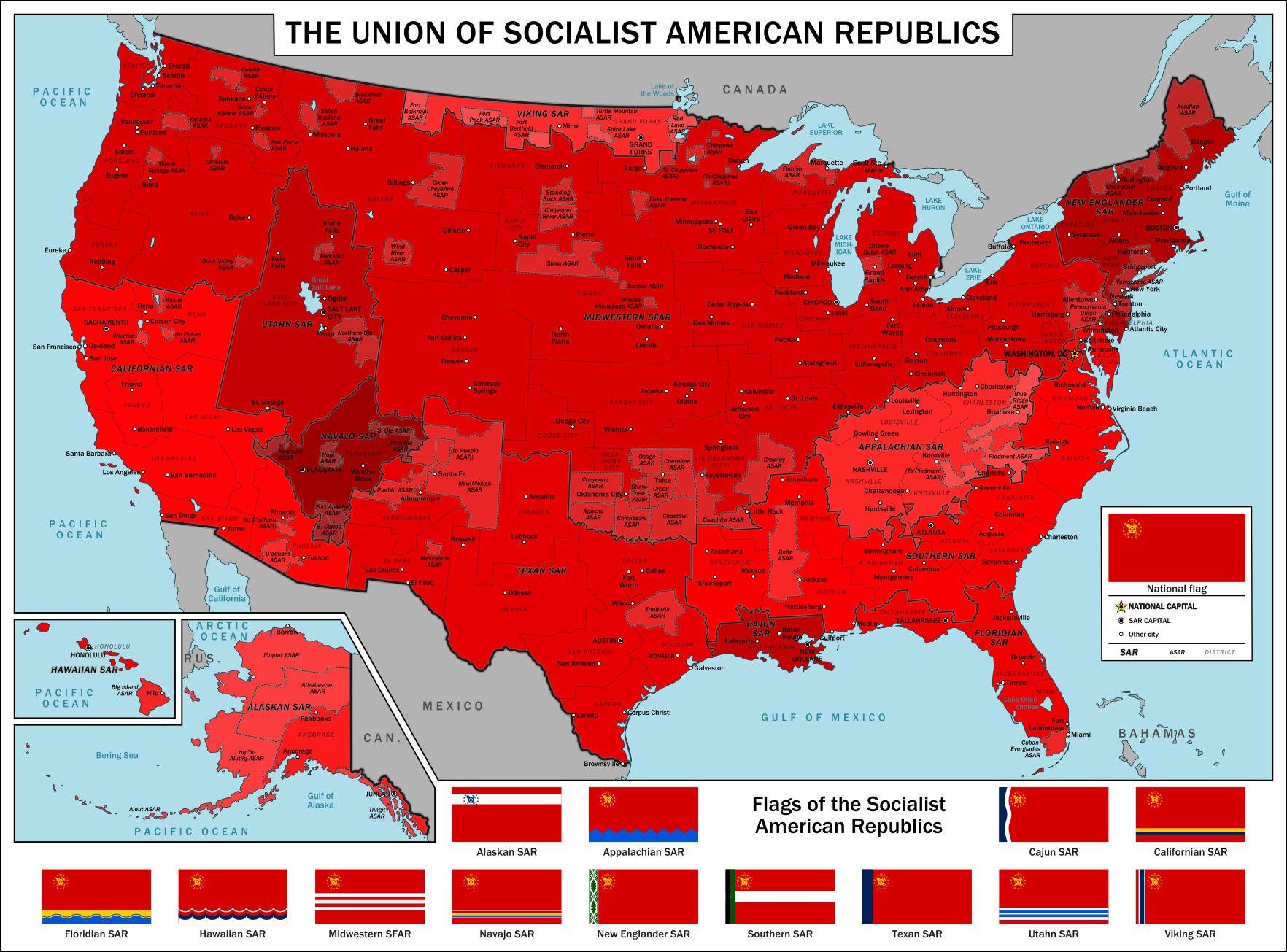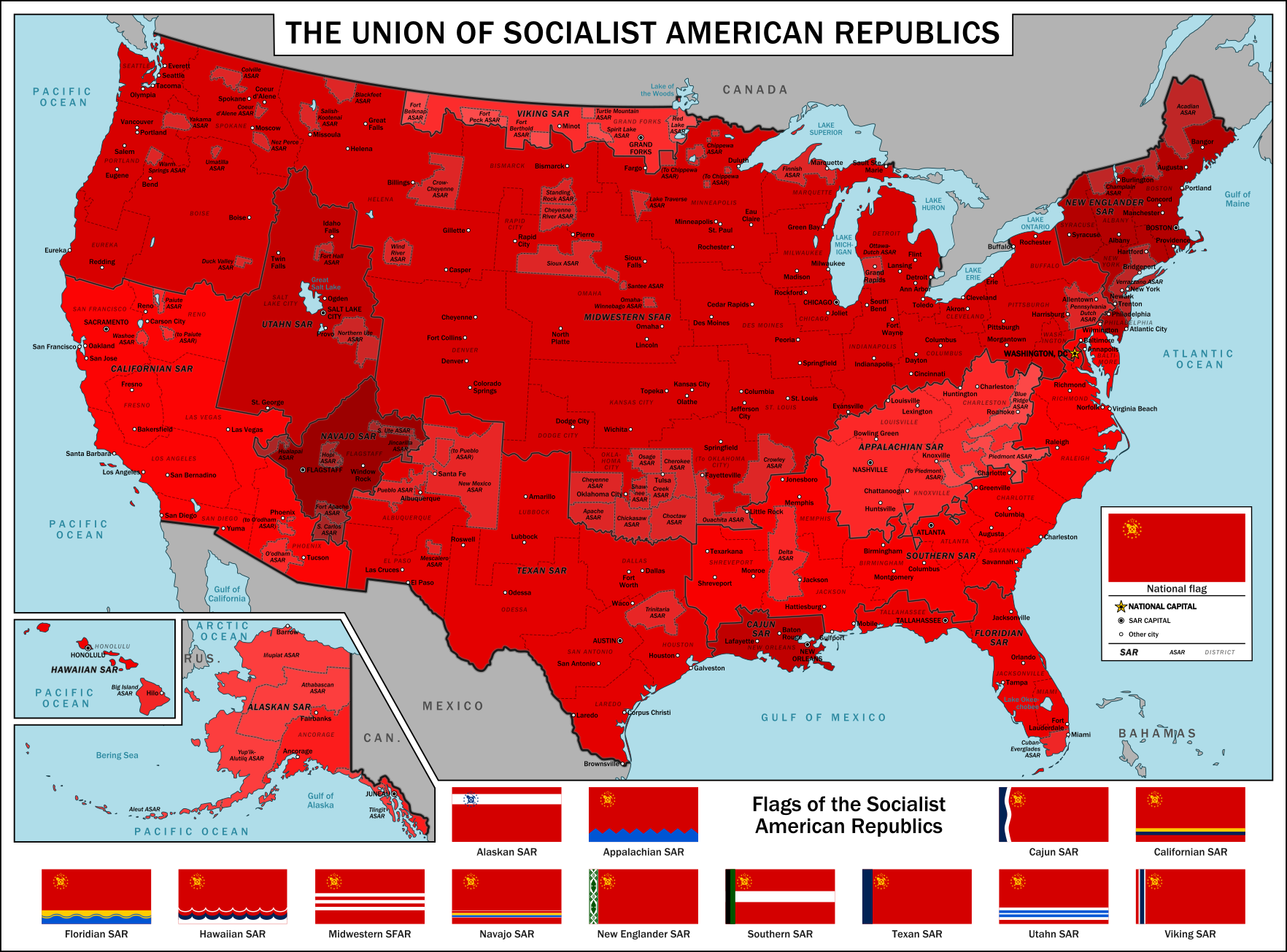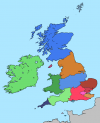B1: The Free Negro Republic
Capital: Douglass, Coosa (OTL’s Birmingham, Alabama)
The Global War, which had ravaged almost every nation in the world, did not spare North America. What began as a conflict between the Triple Entente of France, Austria-Hungary, and Russia (with the aid of Serbia) and the Alliance of Nations, consisting of the United Kingdom, Germany, Italy, Portugal, Greece, Belgium, and Sweden-Norway quickly escalated and drew in further nations. The Japanese Shogunate honored its obligations to France and Russia, the Ottoman Empire joined the Alliance of Nations to shake off Entente influences within its borders… And in North America the two biggest states, the United and the Confederate States, ended up joining, too.
The United States, in part due to its German and Italian immigrant populations and in part due to economic links with the British Empire, joined the Alliance, while the Confederacy, despite strenuous relations with Russia, joined the Entente thanks to its leadership’s sympathies for the aristocracies of France and Austria-Hungary. While the USA and the CSA joined relatively early in the war, in 1915, Mexico would also join the Alliance of Nations in 1917. The North American theater would be just as bloody as the Western European front, but it would see the most drastic shift of the post-war world.
Ultimately the war was “won” by the Alliance of Nations, but outside of some minor territorial concessions and some colonies swapping hands, little changed. Sure, Poland gained independence, albeit as a German client state, and Austria-Hungary lost some lands than France did, but among the imperialist powers of Europe and their possessions, there was not much immediate change. In North America meanwhile the industrial might of the United States crushed the Confederacy, plain and simple. US and Canadian troops managed to occupy the South, with Mexico also managing to conquer some land in the southwest.
At the separate New York Peace Conference, the Confederacy ended its existence. The United States annexed all of Virginia, Tennessee and North Carolina (now called Albemarle), as well as parts of Arkansas, Alabama, Georgia, South Carolina, and Florida (namely Key West). Louisiana and Arkansas, as well as Oklahoma, would become US client states. Mexico would end up annexing the Confederate Arizona Territory, as well as parts of Texas, and both it and the US would occupy the rump Third Republic of Texas for the foreseeable future.
The Deep South, the Confederate heartland, would however be turned over to its black population, which narrowly made up the minority in the remaining areas. White-owned farms would be divided into smaller homesteads, and many Black Virginians would end up moving south to take partial ownership over some of these homesteads. The states in that area would be abolished and new smaller states came to be in their place, named after either local geographic features or prominent historical figures among the black community. The national capital, Douglass, for instance, was named after the famous orator Frederick Douglass, who late in his life wrote extensively about what a post-Confederate South might look like.
This black-run state, named the Free Negro Republic, would enjoy good relations with its neighbors and war-time benefactors. While heavily agricultural, its beaches and historic sites have allowed a small yet noteworthy tourism sector to develop. The politics of the republic tend to lean left-wing, however a focus on family and faith (be it Christian, Muslim, or American Voodoo) is pervasive in FNR society. In certain aspects, the FNR also imitated Haiti, especially in regards to land ownership laws, but it is far more stable than its Caribbean cousin, whom it still respects and the FNR is often among the first countries to send aid to Haiti during times of crisis.
B2: Worker’s and Farmer’s Confederacy of Southland
Capital: Montgomery, Alabama
The year was 1931 when, after several years of heavy protests by the relatively young labor movement, the Confederacy of old fell. Texas and Virginia declared independence, though Virginia would vote to (re-)join the United States in 1942. The remaining states of the Confederacy, finally represented by the average worker, both black and white, created a constitutional convention. The result was the declaration of the Worker’s and Farmer’s Confederacy of Southland.
Southern workers from the industrial areas were able to finally advocate for better working standards, while small-scale farmers were given the land they had been farming for centuries. The rule of the quasi-aristocratic elite of the South was broken. Even black Southerners were given more rights, though full legal equality would only be achieved in 1951. Even today there are a handful of “Sundown towns”, mostly in Florida and Arkansas, in which white-supremacists live and where the state doesn’t have the ability to ensure racial integration and black safety, but for almost 90 years now Southland has seen decent living standards for all, something which was barely believed possible in the region before that fateful year…
Southland is fully integrated into global politics, has seen a rise in tourism, mostly to Florida and Louisiana, and in 2014 made international headlines by being the last Anglophone country of North America to legalize same-sex marriages, three years after Texas.
B3: Socialist Confederation of Southern Republics
Capital: Atlanta, Ogeechee
The Confederated States of America were seen as the sick man of the Americas and thus the 1905 economic crisis was seen by many as the nail in the Confederate coffin. The widespread economic disparities, combined with the very recent abolition of slavery and the subsequent failures of the indentured servitude system led to both the white and black lower classes of the Confederacy to establish a solidary unseen at that point in North American history. Combining that with the rising popularity of far-left thought among certain sections of the Confederate intelligentsia there was now enough fuel for the fire that would burn away the Old South…
In the summer of 1909 groups of protestors stormed several state capitols, courthouses of major cities, and other government buildings. A general strike struck down the economy and members of the militias and state guards joined hands with the protestors. While there was violence, with many dead, in 1911 a “people’s council” drafted a new constitution, one outlawing racial discrimination, collectivizing farmland, and establishing factory councils which were to democratically run the few factories the South possessed. The Socialist Confederation of Southern Republics was born.
While the United States looked at the SCSR first with worry, the government of the new socialist state made one thing clear: while it would advocate for greater worker’s rights, it would not try to spread the revolution into neighboring states. This, combined with the renaming of its southern neighbor, actually helped to calm the nerves of America’s political establishment, and while left-wing groups in the States would often look to the SCSR for guidance, especially in rural areas, no revolution came for the US.
While having a socialist neighbor did help the USA to shift leftwards on the political spectrum, the two countries are still dissimilar in terms of economic policies, but at the very least socialism, even more than one hundred years after the Southern Revolution there at least is no animosity, but rather peace and, especially in environmental and foreign policy matters, cooperation.




